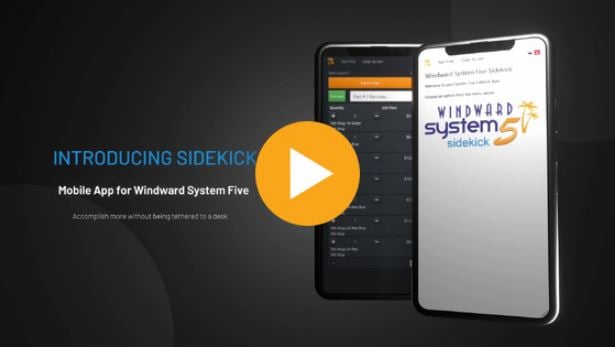This page contains information on configuring the CipherLab 8200 Portable Data Terminal (PDT) aka: data collector. The 8200 model is replacing the 8000 series that have been used for about the past 10 years.
The installation of the 8200 is different to the 8000 and any application currently used for the 8000 model MUST be rewritten for the 8200 model. Loading an 8000 series application onto an 8200 handset will render it useless until the handset flash memory has been erased and the program with the proper application is reloaded.
The 8200 series comes preloaded with an application that fits the requirements of System Five. It allows the scanning of a barcode and the entry of the quantity, and when the data is read from the handset it is in a comma seperated (CSV) text file.
All the information on this page is for the scenario of a brand new CipherLab 8200 PDT being set up for the first time on a Microsoft Windows PC
Hardware Overview
Typical box contents for the product are shown below
| 1 Power Supply 2 Handset Battery 3 Quick Start Guide | 4 Companion Disks 5 8200 Handset 6 USB Cable |
The image below is from the CipherLab 8200 english manual available on Disk 1 shipped with the handset. A copy of the manual may also be downloaded through the support area of the CipherLab website.
Installation
VCOM Driver
This section covers installing the priver file into Windows first. Once the handset is then plugged into the USB cable ad tuirned on, the device will be installed to the system.
The files needed for this installation are on the Proprietary Mobile Computers (7 & 8 Series) Developement Kit Disc 1. After inserting the disk into the drive open the drive in Windows Explorer.
- Browse to \CPT_Tools\USB VCOM Driver\Non-Windows\
- Run the CP210x_VCP_Win_XP_S2K3_Vista_7.exe
Windows Software
This section covers installing the suite of software application onto a Microsoft Windows computer. This suite of programs includes the ones needed to read the information from the handset.
The files needed for this installation are on the Proprietary Mobile Computers (7 & 8 Series) Developement Kit Disc 1. After inserting the disk into the drive open the drive in Windows Explorer.
- Browse to \CPT_Tools\Application Generator\Batch\8 Series AG\
- Run the file Forge_Batch_Install_1000025.exe
- There are a series of programs available in the Windows Start menu once the installation has completed
Configuration
Handset Port
This section covers configuring the port that the handset will use to communicate with the computer. This scenario is for a handset being directly connected to a computer with a USB cable. No cradles or wireless.
- Power on the handset
- Go to 3. Utilities | 1.Upload Interface
- Select 3. USB VCOM
- Press [ENTER]
- Go to 2.DL Program Inter
- Select 3. USB VCOM
- Press [ENTER]
- Go to 3.DL Lookup Inter
- Select 3. USB VCOM
- Press [ENTER]
- Go to 4.Transmission Speed
- Select 1.115200 bps
- Press [ENTER]
Windows COM Port
This section cover configuring the COM port within the Microsoft Windows operating system itself.
The section on installing the vcom driver should be completed before performing these steps.
- Make sure the handset is plugged into the USB cable and the USB cable is plugged into the PC
- Turn on the handset
- Let Windows install the device to the system
After Windows has completed its installation it is possible to check that the installation has completed correctly.
- Open the Device Manager (If you don't know how to do this click HERE)
- In the list of devices, locate Ports (COM & LPT) and expand it to see the list of ports
- There should be an entry called Silicon Labs CP210x USB to UART Bridge (COM6)
- Double click on the Silicon Labs CP210x USB to UART Bridge (COM6) entry to open the properties
- Go to the Port Settings tab
- Set the Bits per second to 115200
- Click OK to close the Properties window
- Close the Windows Device Manager
Troubleshooting
Hardware
Check Configuration
This will display the configuration of the handset to the screen. It's a quick way of checking that the ports and baud rates have been set properly on the handset.
- Power on
- 3. Utilities
- 1. Program Settings
- 9. View Settings
Memory Test
This would normally be done as a test of the hardware itself. No errors should be returned during the test. If there are it is possible that the handset contains a faulty component and the supplier should be contacted for verification.
- 7 and 9 and power
- Power off
- 1 and 7 and power
- 3. Burn-In Test
- Enter to start the test when prompted
- Leave to run for about 10 minutes
- Power off
Clear Flash Memory
- 7 and 9 and power
- Power off
- 1 and 7 and power
- 1. Kernal Information
- Hold down FUNCTION and 9 till the handset starts beeping and it will state “erasing flash”
- The handset will display Erase complete when finished
- Power off
Reloading Program
This can only be done after the software suite is installed on the machine and the Windows com port has been configured to talk to the handset.
The following steps require work to be done on the handset as well as the PC.
PC
- Go to Start | All Programs | CipherLab | Forge | Batch | Application Generator | 8 Series Batch AG
- Select Transfer | Send Program
- Set the Comm settings | Comm type to RS-232 / IrDA
- The COM port and Baud rate options would be set as per the Windows com port configuration
- The File option | File type setting MUST be set as .SHX file
- Use the Browse button to go to C:\CipherLab\Forge\Batch\8 Series\RunTimeand select the U8200-v1021.shx file
Handset
- Turn on the handset
- Select 1. Download
- Select 1. —–
- Select 2. USB VCOM
PC
- Select OK to load the program
- Select OK to close the Download Complete
- Select Exit to close the Program download screen
- Close the Forge program
Handset
- Select ESC to skip the naming process
- Select ESC to go back to the Program Manager menu
- Select 2.Activate
- Select 1.c AG8200-1.02. 448
- Turn on the handset
- Select ESC to clear the file
Microsoft Windows
Checking The Device Installed Correctly
This section is to check that the virtual com port is installed correctly. The com port will only appear in Windows after the installation has been successfull.
The section on installing the vcom driver should be completed before performing these steps.
- Make sure the handset is plugged into the USB cable and the USB cable is plugged into the PC
- Turn on the handset
- Open the Device Manager (If you don't know how to do this click HERE)
- In the list of devices, locate Ports (COM & LPT) and expand it to see the list of ports.
- There should be an entry called Silicon Labs CP210x USB to UART Bridge (COM6).
Accessing Device Manager
There are a few different ways to access the Device MAnager in Windows. Windows XP and Windows 7, the two main operating systems in use at the moment, have very similar ways.
| Windows XP | |
| - Click on Start and then Run | |
 | |
| - Type the following command in the Open: text box, and then hit [ENTER] or click on the OK button | |
devmgmt.msc | |
 | |
| - The Device Manager should display right away |
| Windows 7 | |
| - Click on the Windows 7 Start button | |
 | |
| - Type the following command in the search box and then hit the Enter key: | |
devmgmt.msc | |
 | |
| - The Windows 7 Device Manager will display immediately. |




















